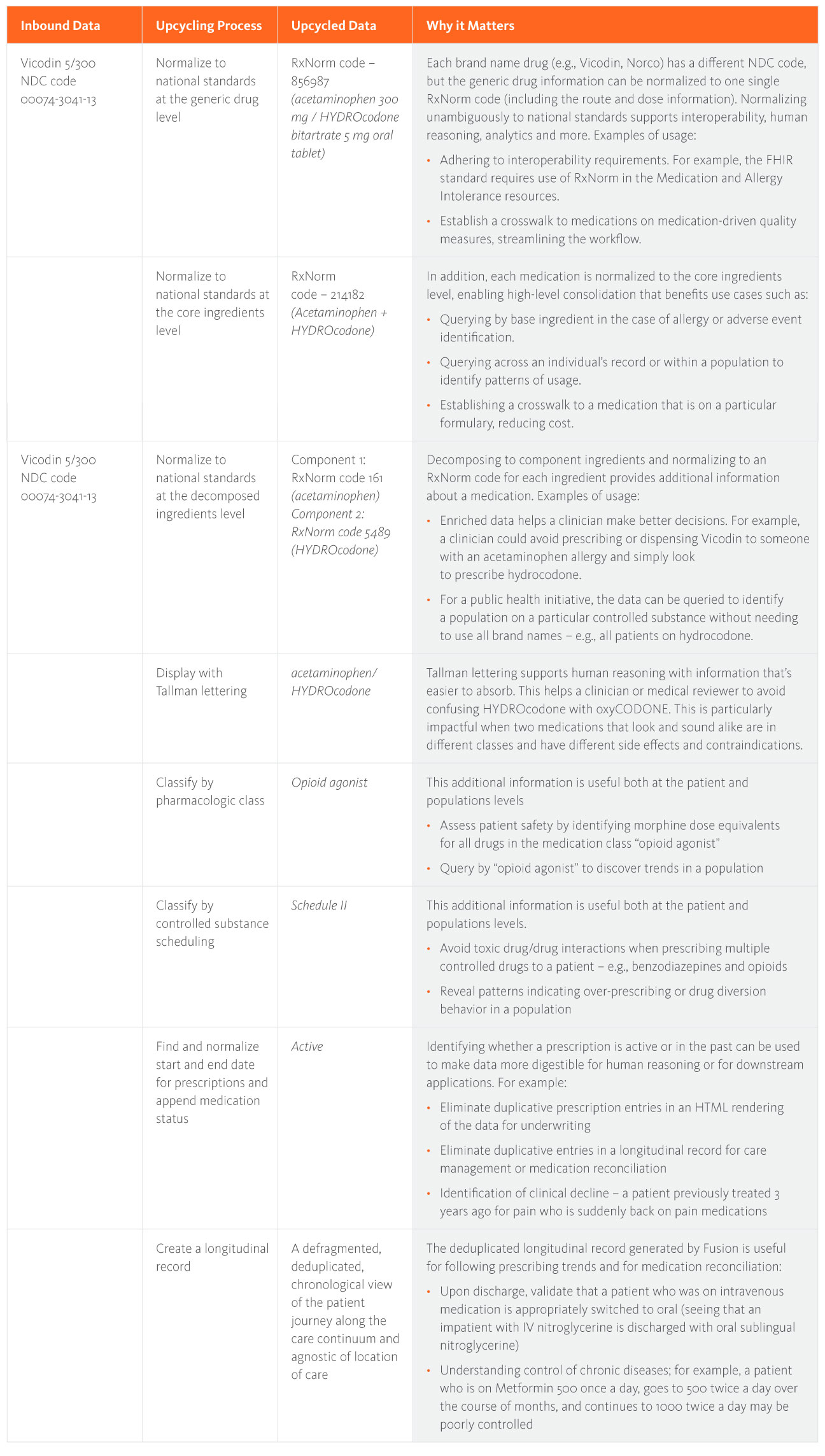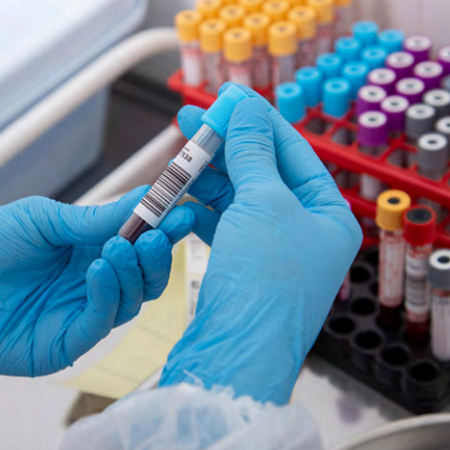Why Upcycling Data™ Matters
Clinical data can be a powerful, strategic asset but how can healthcare organizations unleash its full potential?
Clinical data can be a powerful, strategic asset but how can healthcare organizations unleash its full potential?
Healthcare organizations are making significant investments to acquire clinical data. However, collection is just the first step in a complex process to unleash its full potential. Once data has been acquired, the content that makes up the data and how it’s structured must be parsed, semantically normalized, enriched, and synthesized. Transforming raw clinical data into the cleanest, most precise data asset that’s actionable, accessible, and prepared for use requires a set of specialized skills and capabilities. The complexity of this process is due to varying documentation from provider to provider and practice to practice as well as inconsistent use of standard terminologies leading to incredible content variation within clinical sources.
For example, coding can vary widely within and across sources due to inconsistent standardization practices and documentation workflows. Even something as common as an HbA1c lab test tied to one Logical Observation Identifier Names and Code (LOINC) can have more than 100 code and description variations.
Imagine the scale of the problem when looking across all lab tests, medications, and procedures. Availity Fusion™ solves this content challenge through semantic normalization to ensure standard, interoperable clinical data can be used as a strategic asset for decision making. To make large sets of multi-format clinical data usable, healthcare organizations may attempt to leverage in-house resources and teams of data analysts. However, these approaches are costly, difficult to scale, and rarely yield the expected return on investment. Further, the work is never done, as each new data source requires mapping and data volumes continue to explode over time.
In a recent ROI analysis conducted with a major health plan customer, we identified hundreds of millions of dollars in costs to standardize, aggregate, and enrich clinical data for broadscale application.
“Clinical data can be a powerful, strategic asset when it is actionable, accessible, and prepared for use.”
+100 variations in descriptions and codes for HbA1c, with a single LOINC code
Imagine the variation across +2,000 LOINC codes for common lab tests
Then the variation across 10 major clinical domains per CCD

Upcycling Data™ is the process of aggregating clinical data from multiple sources and transforming it into a data asset that can be readily used for multiple purposes. Upcycling Data starts with normalizing codes to national standards. It extends to filling in data gaps caused by poor documentation and enriching the data so that it can be analyzed, searched, and shared. Upcycling Data also includes aggregating and summarizing data from multiple sources into a longitudinal record in which duplicate entries have been removed to make the information complete and streamlined. All this is completely automated, in near real time. And when we update our software to incorporate new codes and standards, those benefits are realized instantaneously across all data formats. Finally, Upcycling Data takes into account the need for flexibly integrating clinical data into your infrastructure and data processing pipelines, exchanging it using standards like Fast Healthcare Interoperability Resources (FHIR®), and deploying data fit for specific business purposes to drive immediate value and ROI.
In the Medication and Diagnosis domain examples below, we highlight a few real-world examples of clinical data challenges and how the process of Upcycling Data executed by Availity Fusion technology is essential to realize the benefits of clinical data across many use cases.
Incorporating clinical data into workflows and analytics has great potential to improve member health and operational efficiency. But there are challenges that must be addressed to unlock that potential. Some of those challenges contributing to the significant variation include:
Non-standard, erroneous, or missing codes in data sourced from EHRs, labs, and HIEs, limiting its use in analytics
Information frequently documented in incorrect places in the medical record
Duplicate entries of the same prescription or diagnosis, obscuring medical facts under mountains of information

Aggregate
49% → 83%
Vital Signs
57% → 98%
Labs
18% → 68%

The examples on the previous page relate to just two clinical domains, representing a single medication and one diagnosis. Coding variation and the need for upcycling increases exponentially across clinical domains. Availity Fusion’s upcycling processes increase the volume of high-quality, usable data, automatically. As shown in the chart above, generated from a recent data quality analysis performed across 14 different EMRs, about 49% of data across eight major clinical domains was validated and confirmed usable on the inbound, compared to 83% of data being usable after being upcycled by Availity.
As illustrated, upcycling goes beyond simple terminology mapping and ensures that data is semantically normalized to convey the clinical intent. But semantic normalization is simply the first step. Data enrichment makes the data searchable and ready for analytics. Beyond normalization and enrichment are functions such as creating a deduplicated longitudinal record and producing data fit for purpose, such as producing FHIR output for patient access.
In future briefs, we provide additional examples to illustrate why upcycling data matters for analytics, for better clinical decisions, and for interchange and integration.